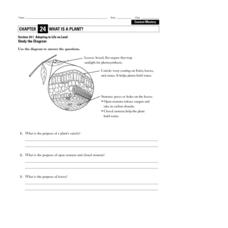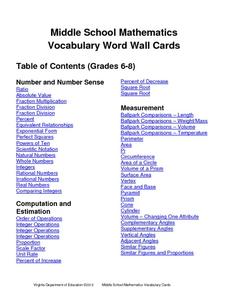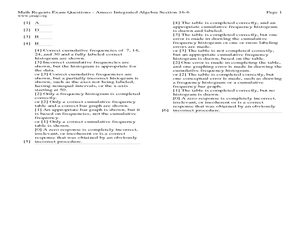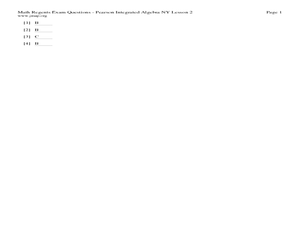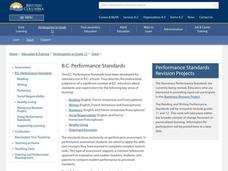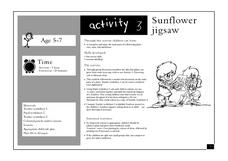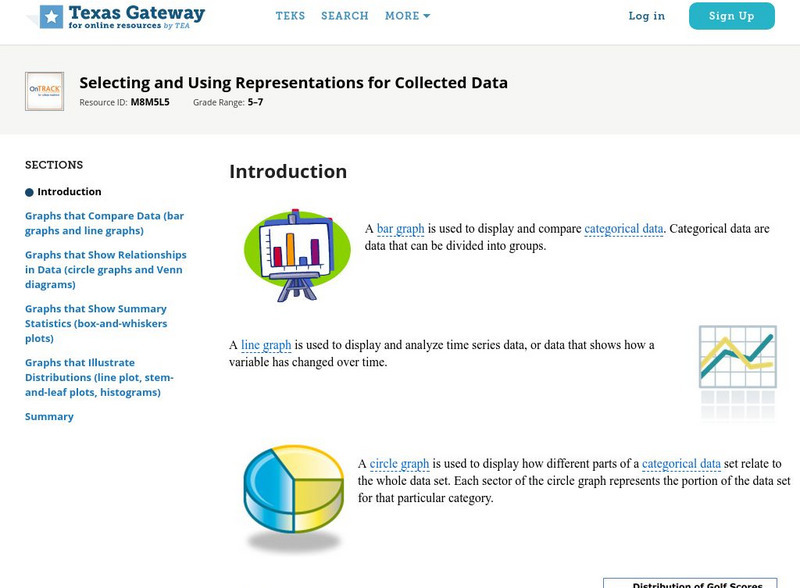Curated OER
Plant Structure, Function and Growth
Students study three structures of a plant as well as their locations and functions. In this botany lesson students complete several activities on plant organs and their functions.
Curated OER
Flowering Plants
In this flowering plants instructional activity, learners compare the structure and function of a tree trunk and a leaf. This instructional activity has 1 true or false and 5 fill in the blank questions.
Curated OER
Pollination Station
Learners investigate why and how bees pollinate flowers and other plants. They define pollination, and read and sing along with the song "Yo, i'm a Flower." Students examine a diagram of a flower, simulate bees pollinating flowers, and...
Curated OER
Adapting to Life on Land
In this plant structure worksheet, 5th graders will use a diagram of a leaf to complete 3 short answer questions on the purpose of a plant's cuticle, open and closed stomata, and leaves.
Curated OER
Make a Frequency Table and a Histogram for a Given Set of Data
In this data recording and data organization learning exercise, students create one frequency table and one histogram for a given list of data. Explanations and examples for frequency tables and histograms are given.
Virginia Department of Education
Middle School Mathematics Vocabulary Word Wall Cards
Having a good working knowledge of math vocabulary is so important for learners as they progress through different levels of mathematical learning. Here is 125 pages worth of wonderfully constructed vocabulary and concept review cards....
Inside Mathematics
Archery
Put the better archer in a box. The performance task has pupils compare the performance of two archers using box-and-whisker plots. The resource includes sample responses that are useful in comparing individuals' work to others.
Curated OER
Raisin the Statistical Roof
Use a box of raisins to help introduce the concept of data analysis. Learners collect, analyze and display their data using a variety of methods. The included worksheet takes them through a step-by-step analysis process and graphing.
Curated OER
Quartiles, Percentiles, and Cumulative Frequency
In this statistics lesson, 11th graders are asked to calculate the percentiles, quartiles and cumulative frequency given different graphs and data. There are 6 questions with an answer key.
Curated OER
Raven Chapter 35 Guided Notes: Plant Form
The ups and downs of plant vascular tissue are described by your beginning botanists as they complete this worksheet. Xylem and phloem are defined and identified on actual color photographs. Functions of the different types of meristem...
Curated OER
Quartiles and Box-and-Whisker Plots
In this algebra worksheet, students identify the central tendencies as they solve a box and whisker plot graph. They identify the quartiles of the data. There are 4 questions with an answer key.
Curated OER
Childhood Obesity
Students identify a question to generate appropriate data and predict results. They distinguish between a total population and a sample and use a variety of methods to collect and record data. Students create classifications and ranges...
Curated OER
Plant Structure and Function
With a few minor formatting changes, the plant parts and processes resource here would make a great study guide, quiz, or self assessment. Currently, it is a bit confusing, but changing some lettering to numbering would clear up any...
Curated OER
What Parts of a Plant Do We Eat?
Did you know that tomtoes and cucumbers are actually fruits? Biology or botany beginners read about the function of flowers and fruit and find that some food items commonly called vegetables are, by definition, also fruits! Give learners...
Curated OER
Sunflower Jigsaw
Students recognize and name the main parts of a flower. In this life science lesson, the teacher leads a discussion about the parts of a plant, then students color and cut out the parts of a planet, then glue the parts together...
Curated OER
Cloud Shadows
Students classify clouds as transparent, translucent or opaque. They conduct an experiment to determine the visual opacity of several classroom objects and then conduct further observations of clouds.
Biology Junction
Introduction to Plants
In this biology lesson, students identify the different types and parts of the plant. They complete a crossword puzzle with 37 questions about plants.
Curated OER
Eat Your Plants
Students explore fruits and vegetables. In this fruits and vegetables lesson plan, students work in small groups investigating plant parts. Students discover that fruits and vegetables originate from different parts of plants.
Curated OER
Peanut Anatomy
Students explore the peanut plant. In this peanut lesson, students discuss the needs and parts of regular plants. They research peanut plants to see why they are unique.
ClassFlow
Class Flow: Stem and Leaf Diagrams
[Free Registration/Login Required] In this flipchart, students develop an understanding of algebraic sense by recognizing sequences between sets of numbers and linear patterns. Students apply their understanding to recognize the formulas...
University of South Florida
Fcat: Drops on a Penny: Teacher Notes
Students learn how to create stem-and-leaf diagrams and boxplots by collecting data on the surface tension of water molecules. This hands-on activity using pennies is a great way to learn how to organize data.
Soft Schools
Soft Schools: Plant Parts
Identify the major parts of a plant. Select each part name and drop in the boxes next to the full-color diagram.
Texas Education Agency
Texas Gateway: Selecting and Using Representations for Collected Data
[Accessible by TX Educators. Free Registration/Login Required] Given a variety of data (including line plots, line graphs, stem and leaf plots, circle graphs, bar graphs, box and whisker plots, histograms, and Venn diagrams), the student...
HotChalk
Hot Chalk: Lesson Plans Page: Plants and Animals
In this lesson plan, young students will be able to identify a plant's parts, explain their functions, diagram a plant, and create a mobile to demonstrate their understanding.





